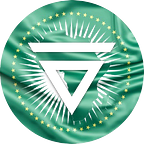Non-fungible tokens(NFTs) on Block-chain
Velas Africa Marketing Manager emphasizes on NFT
Non-fungible tokens(NFTs) is a digital object that can be a drawing, animation, piece of music, photo or video with a certificate of authencity created by block-chain technology, hence, all Non-fungible tokens(NFTs) have a unique quality and a distinct value from any other similar token.
The unique identity and ownership of non-fungible token (NFT) are verified on a block-chain (a digital ledger). NFTs are not mutually interchangeable. NFTs are commonly created by uploading files, such as digital artwork, to an auction market. This creates copies of the files, which are recorded as NFTs on the digital ledger. The tokens can then be bought with crypto-currency and resold.
NFTs can be used to commodify digital creations, such as digital art, video game items, and music files. Access to any copy of the original file, however, is not restricted to the owner of the token. The speculative market for NFTs soared in early 2021 when the same investors who had speculated on crypto-currencies traded NFTs at greatly increasing volumes. NFTs mostly run on a proof-of-work block-chain, which is less energy efficient than a proof-of-stake block-chain.
Uses;
NFTs can be used to cause artificial scarcity of a digital creative work by making only one NFT of that work with a unique signature. NFTs of artworks are therefore similar to autographed items. The unique identity and ownership of an NFT is verifiable via the block-chain ledger. NFTs have metadata that is processed through a cryptographic hash function, an algorithm that calculates a unique, 40-digit sequence of letters and numbers. NFTs are also used to create the possibility of asset interoperability across multiple platforms.
Standards in Block-chain
Specific token standards have been created to support the use of a block-chain in gaming. These include the Ethereum ERC-721 standard of Crypto-Kitties, and the more recent ERC-1155 standard. Token standards also exist on other block-chains that support NFT like Bit-coin Cash and FLOW block-chain.
Ethereum
ERC-721 was the first standard for representing non-fungible digital assets on the Ethereum block-chain. ERC-721 is an inheritable Solidity smart contract standard, meaning that developers can easily create new ERC-721-compliant contracts by importing it from the Open Zeppelin library.
ERC-1155 brings the idea of “semi-fungibility” to the NFT world, as well as providing a superset of ERC-721 functionality (meaning that an ERC-721 asset could be built using ERC-1155).
Bit-coin Cash
The Simple Ledger Protocol (SLP) can be used to support non-fungible tokens by minting a non-divisible token supply of 1 without a minting baton, called a simple NFT.
NFT1 was introduced onto the Bitcoin Cash block-chain in 2019 as part of the SLP token structure. The specification codifies a more capable type of NFT that allows the grouping of many NFTs together.
Flow
On the Flow block-chain, created by the team behind Crypto-kitties, the Cadence programming language represents each NFT as a resource object that users store in their accounts. Resources have important ownership rules that are enforced by the type system. They can only have one owner, cannot be copied, and cannot be accidentally or maliciously lost or duplicated. These protections ensure that owners know that their NFT is safe and can represent an asset that has real value.
GFT Alliance
The GFT Alliance promotes and supports NFT distributed ledger technology for intellectual property partners (entertainment, gaming, film, arts, sports, etc.) including research, development, and education that empower on-going innovation for branded NFTs (GFT Authentic Digital Collectibles). The GFT Alliance helps intellectual property partners create NFTs and smart contracts to be distributed and traded on a globally accessible, transparent, and trusted distributed marketplace network.
In conclusion and summarily, Non-fungible tokens are the digital representations of real-life items like artworks and real estate. What differentiates it from crypto-currencies which are fungible the fact they cannot be exchanged or traded at equivalency. The value of 1bitcoin is the same as the value of another bitcoin, but the value of one artwork or real estate can’t be the same value as another, hence the term NON-FUNGIBLE.
About me: https://www.linkedin.com/in/abdulqadir-dauda-97942a194/
